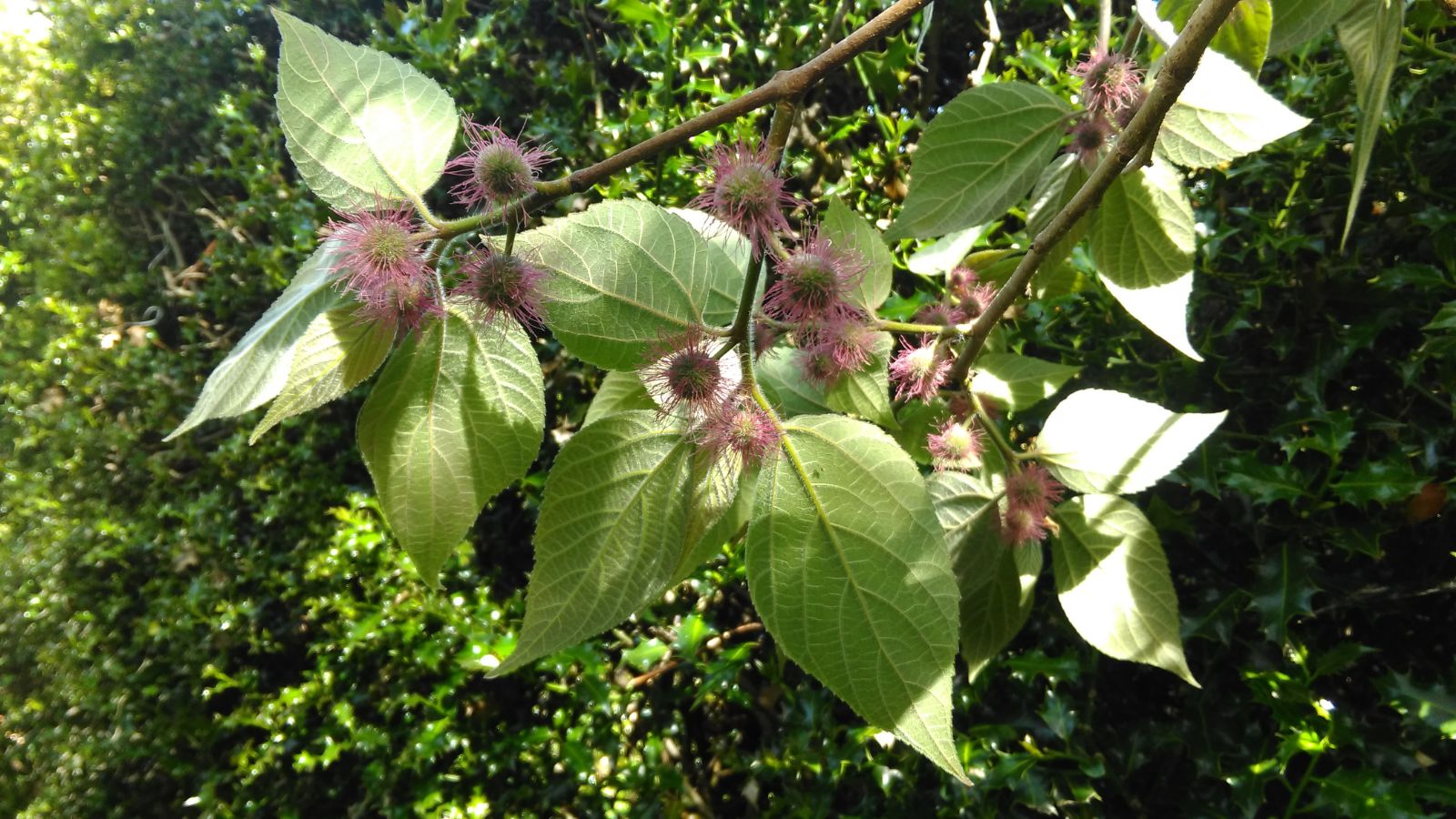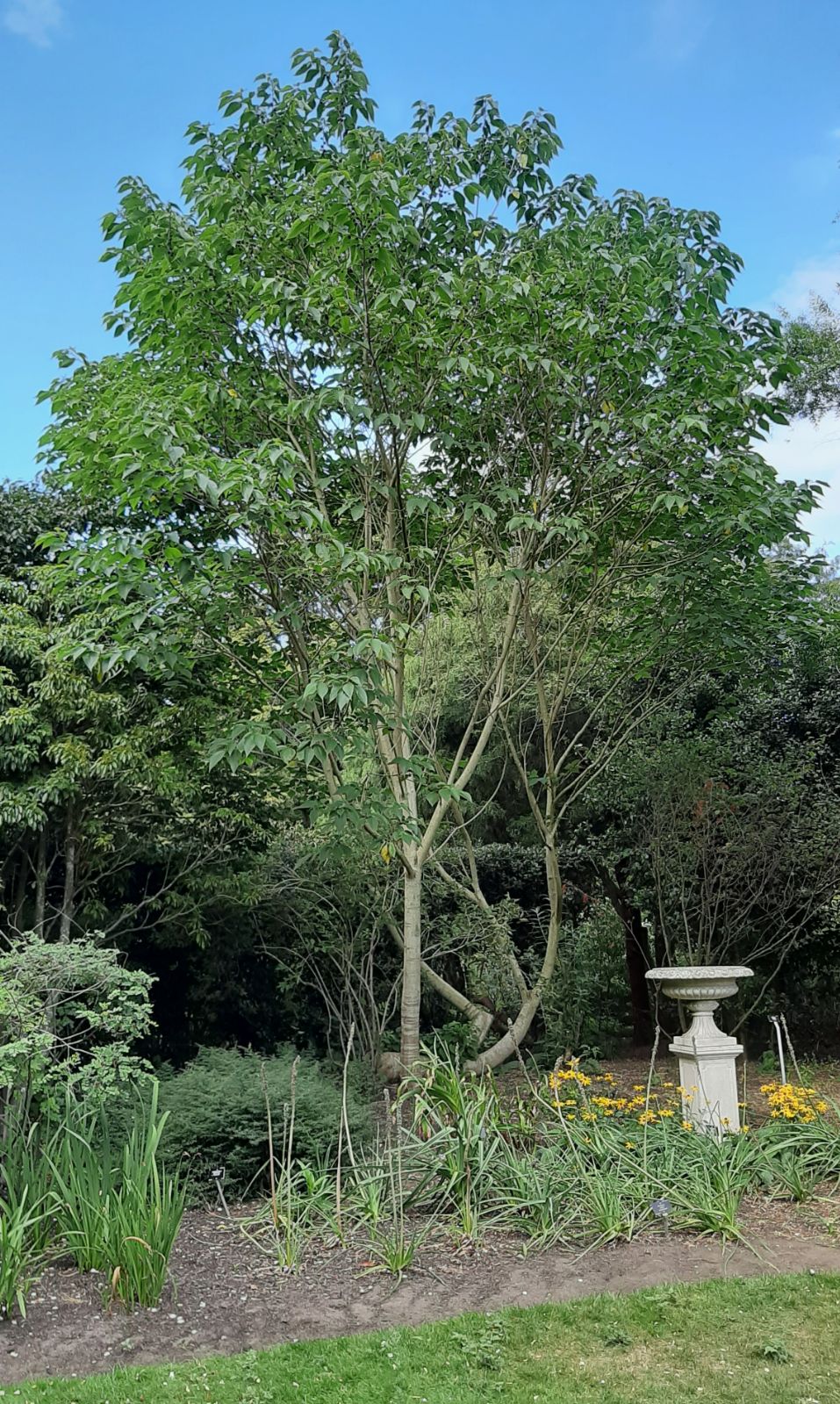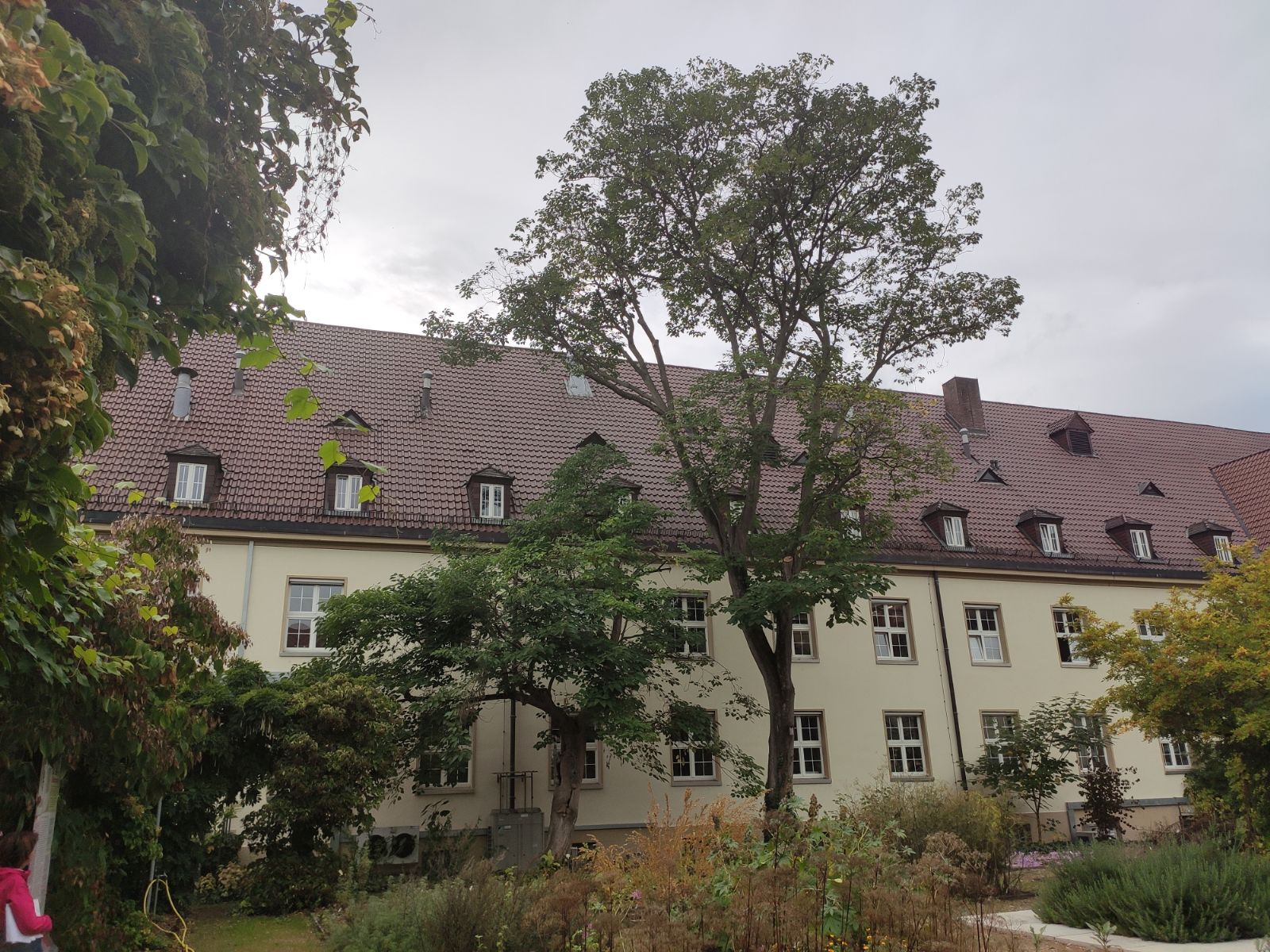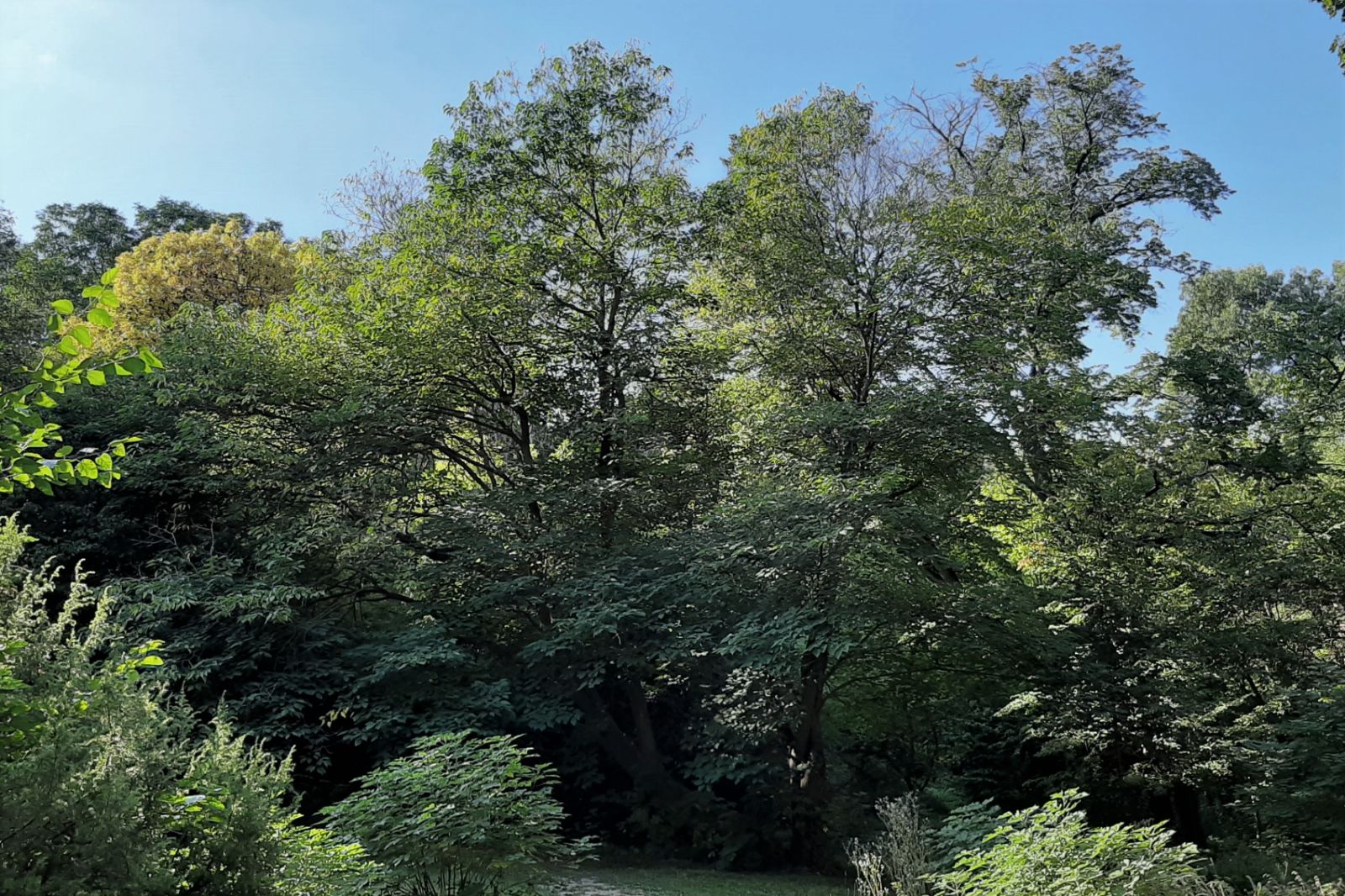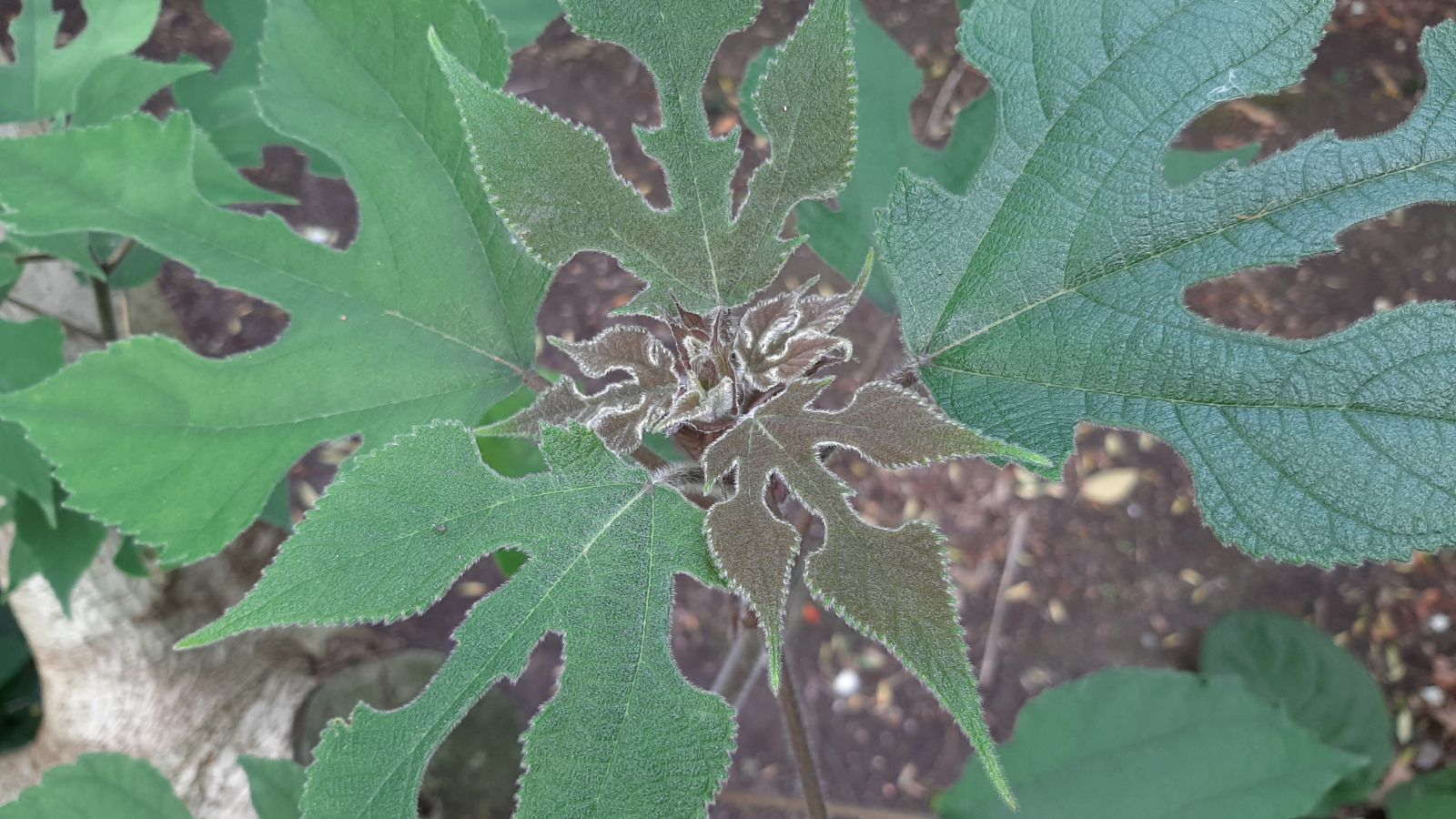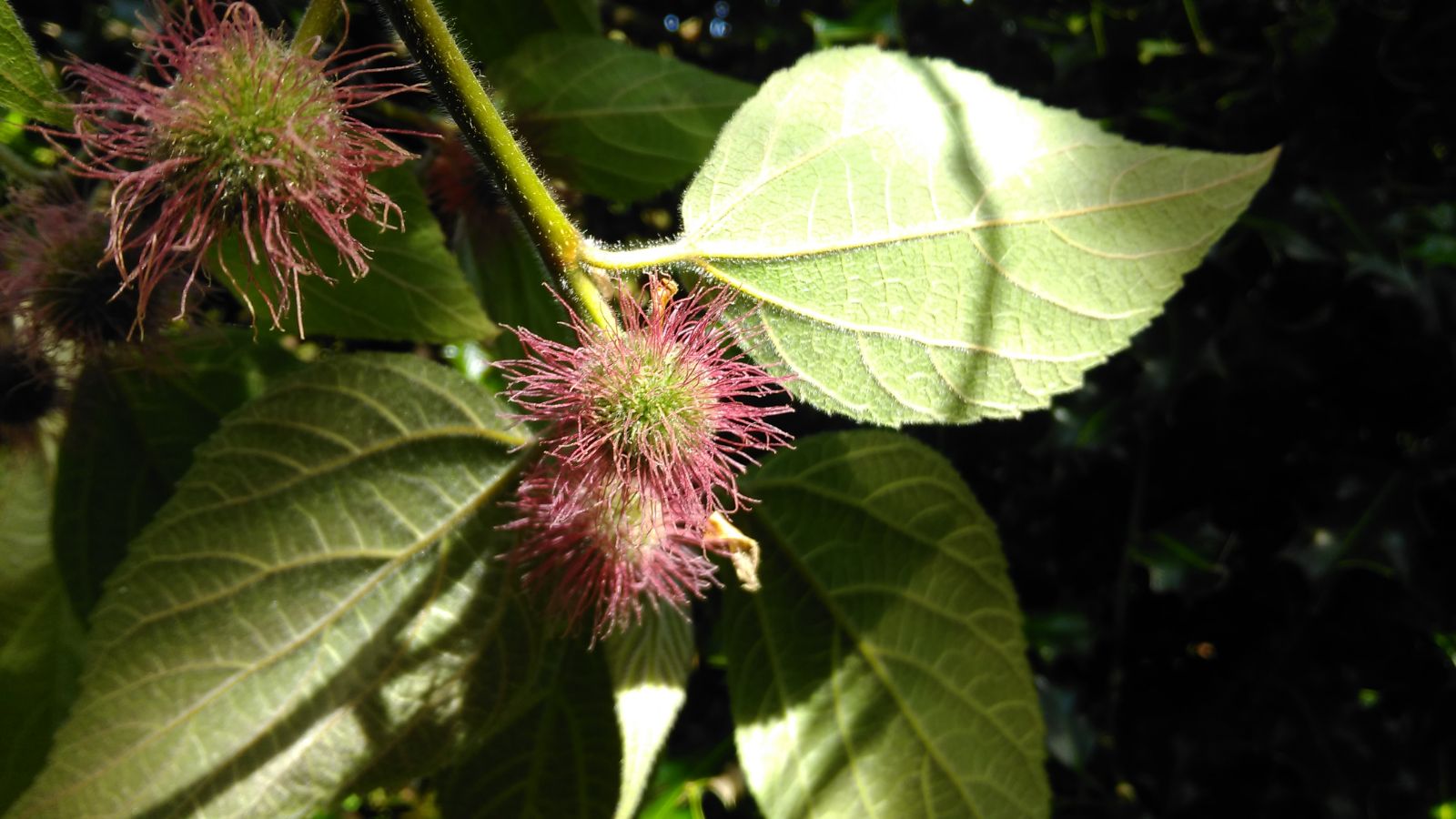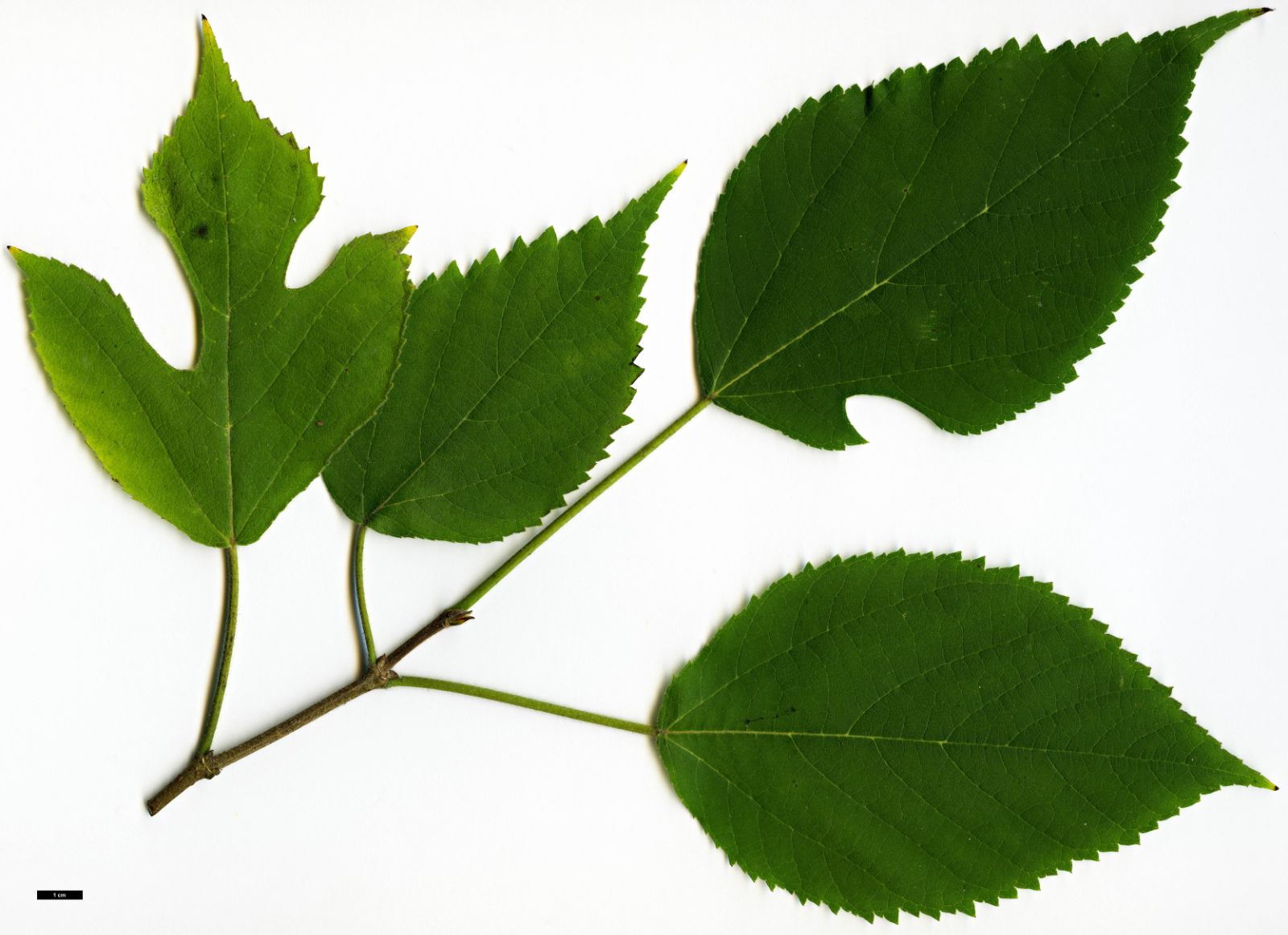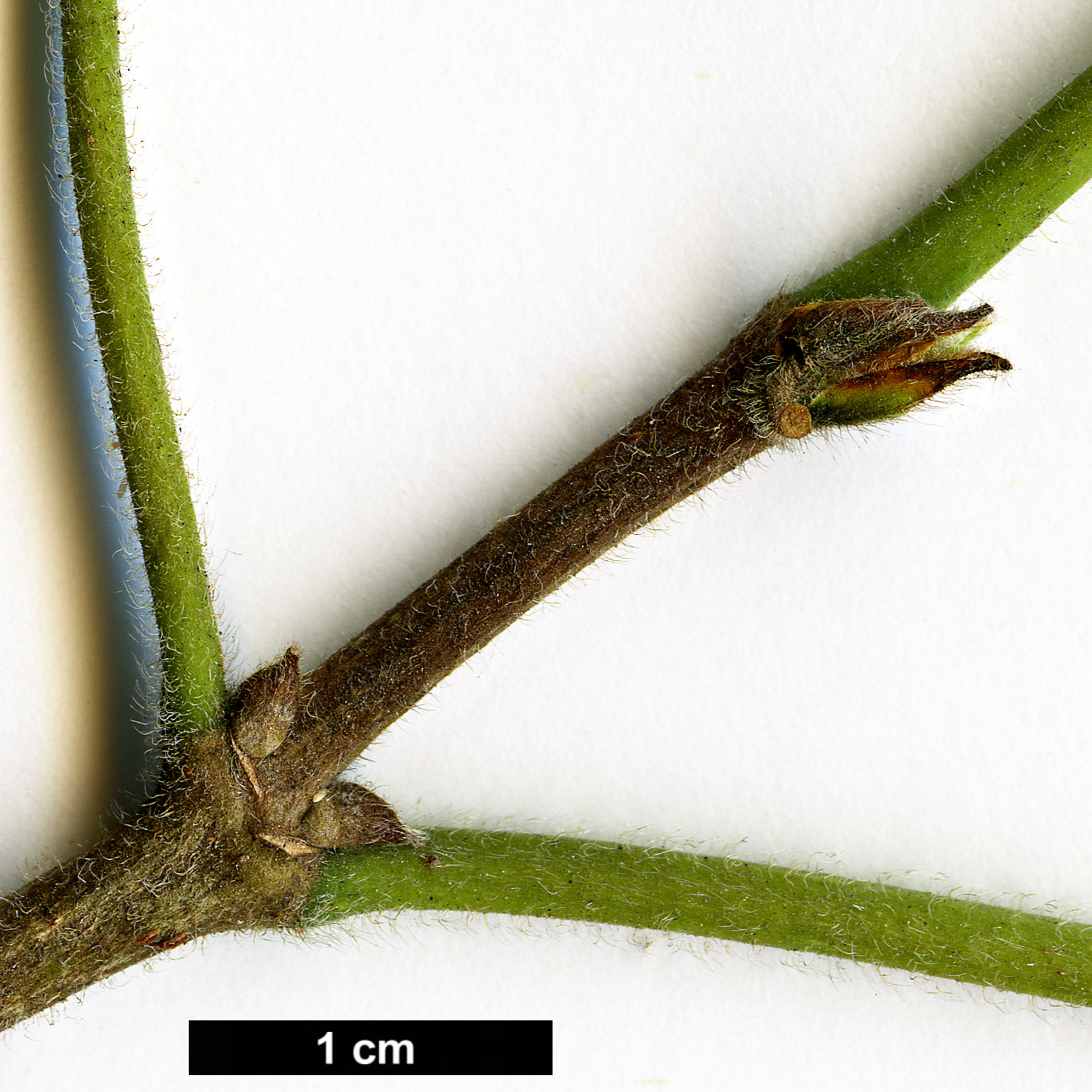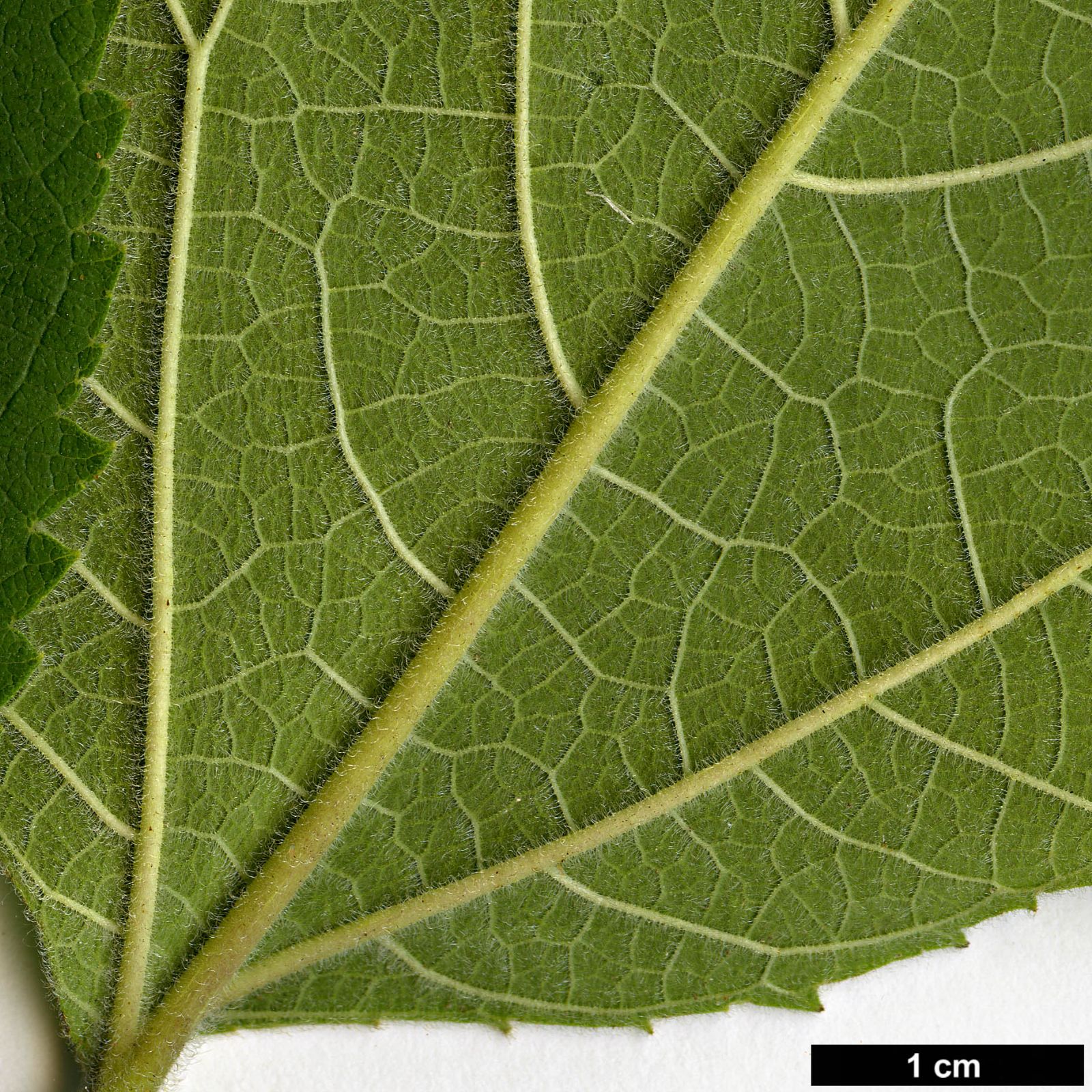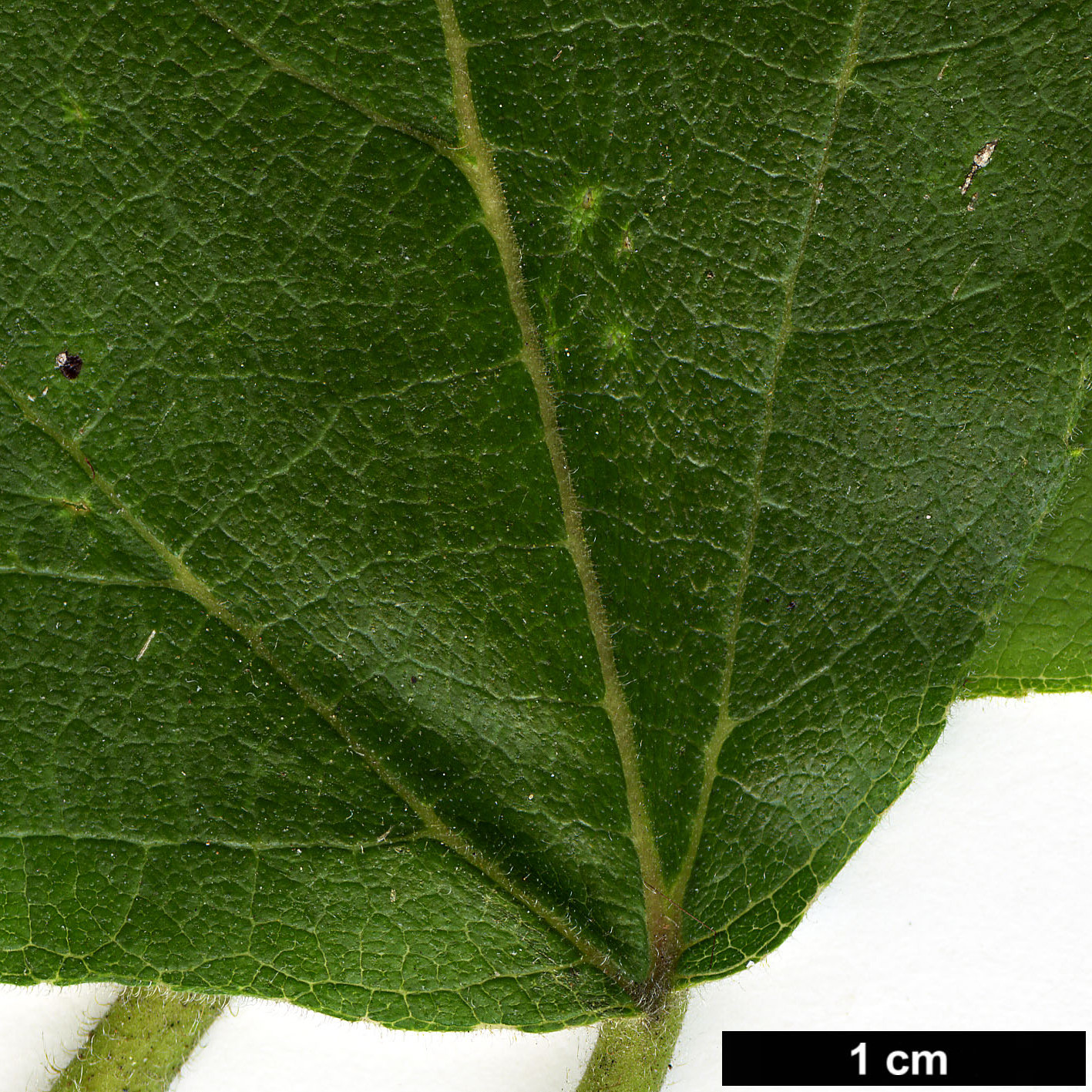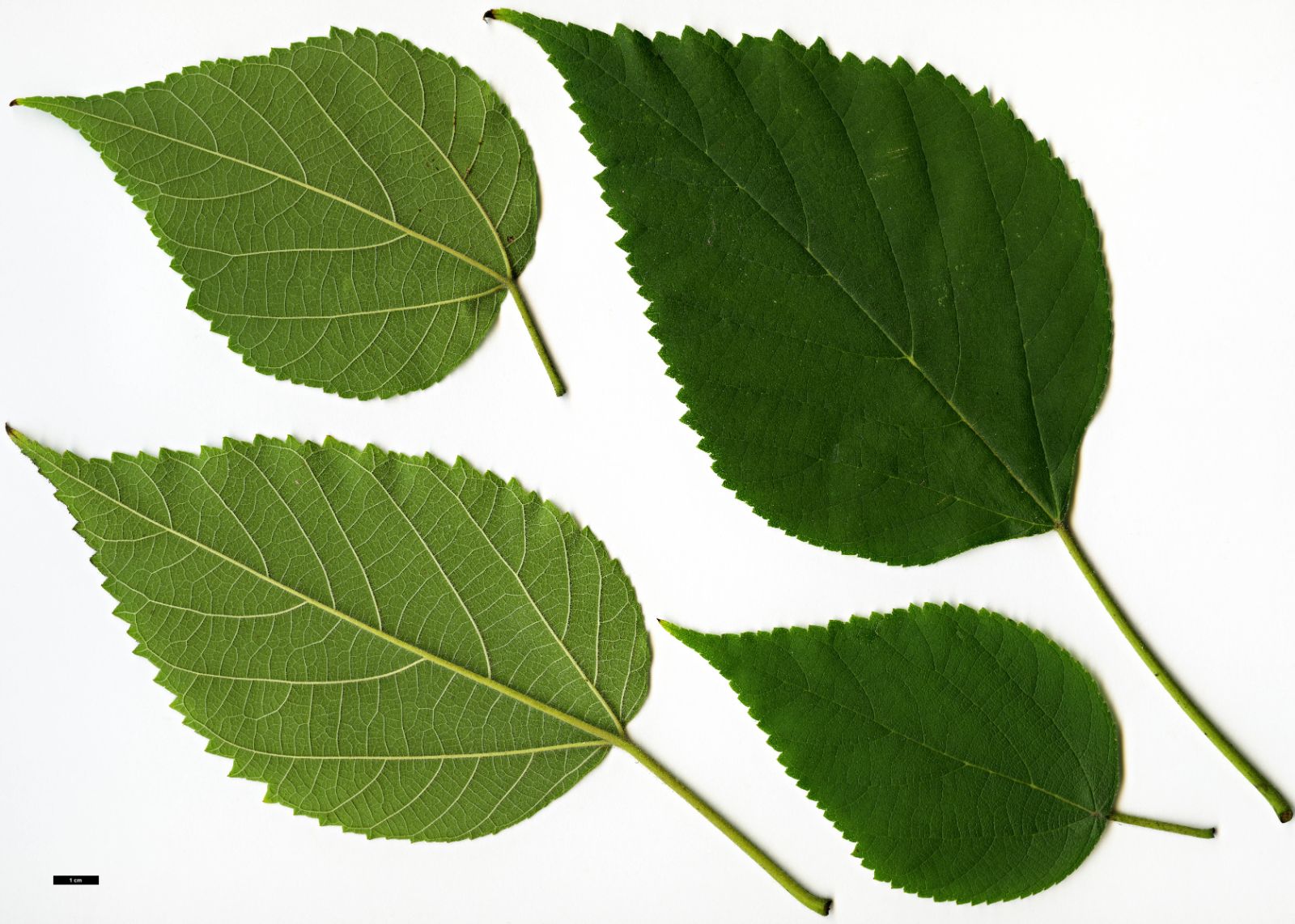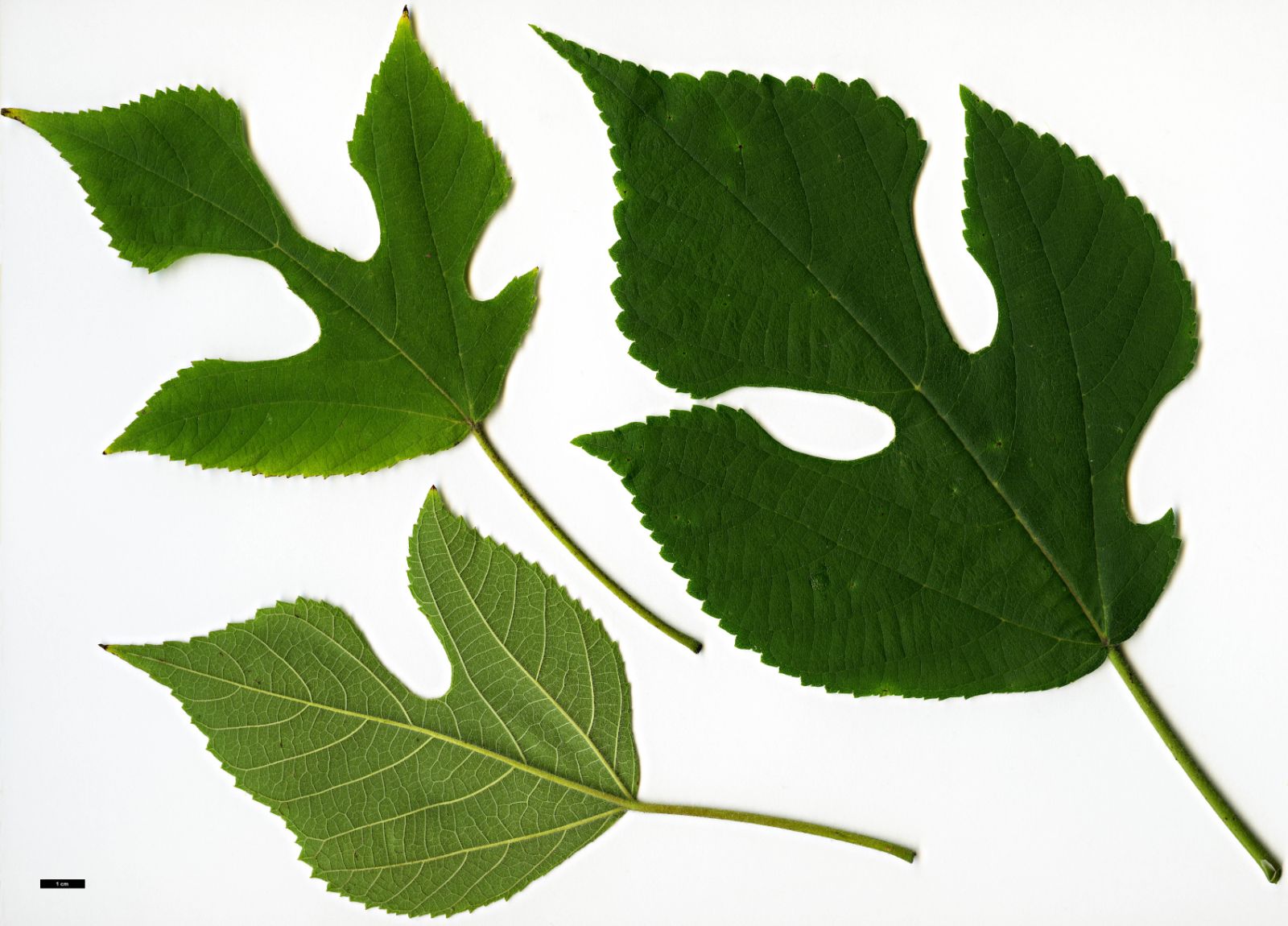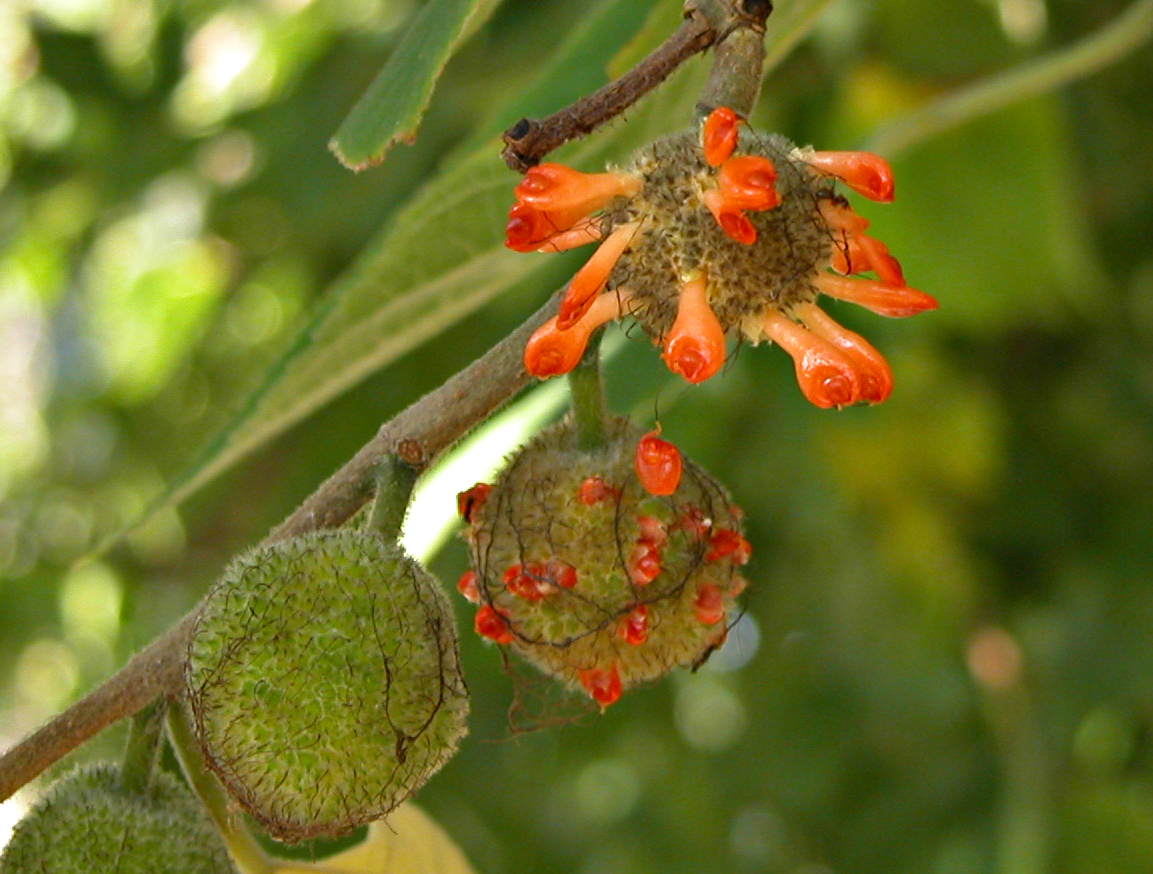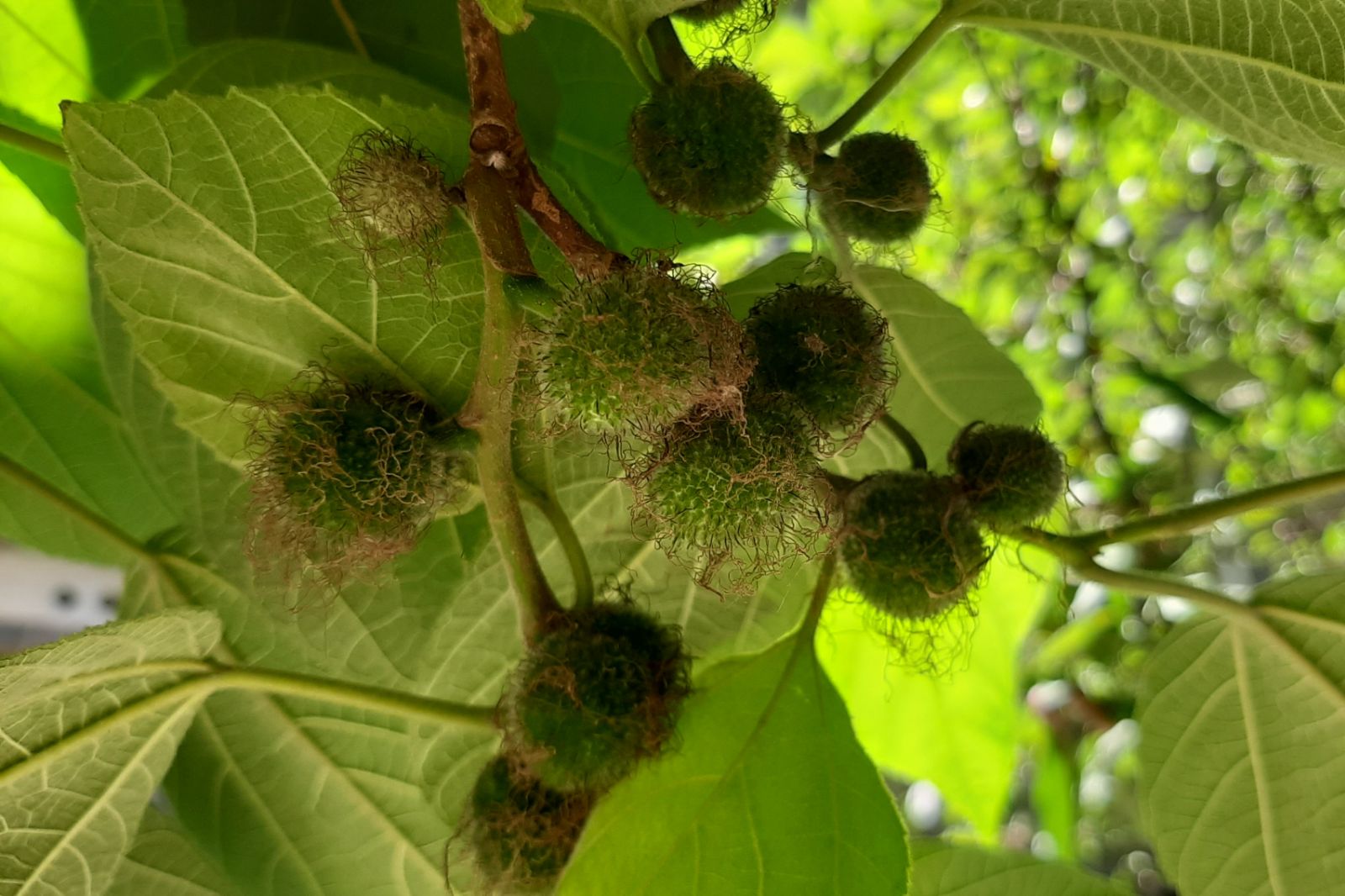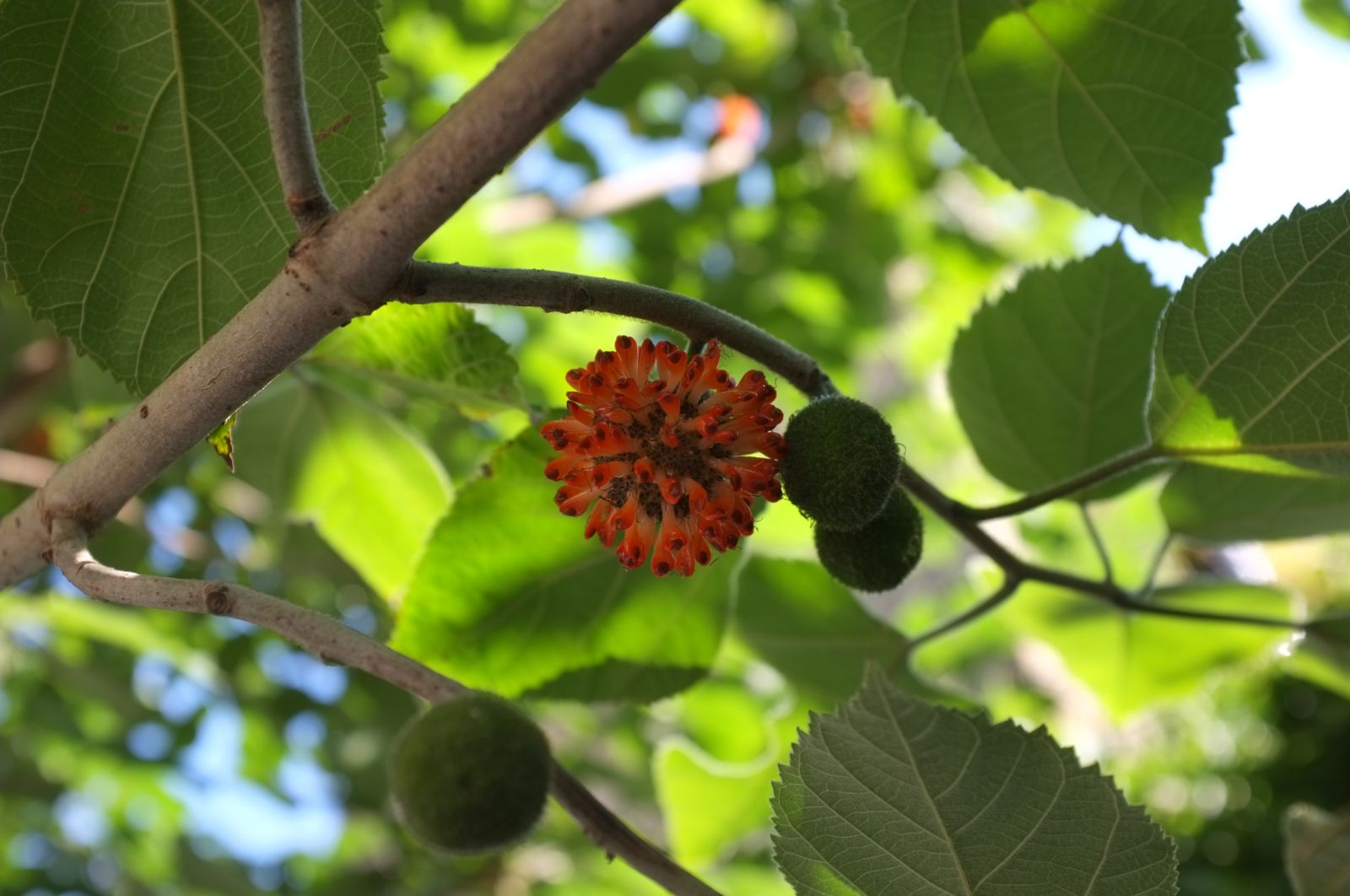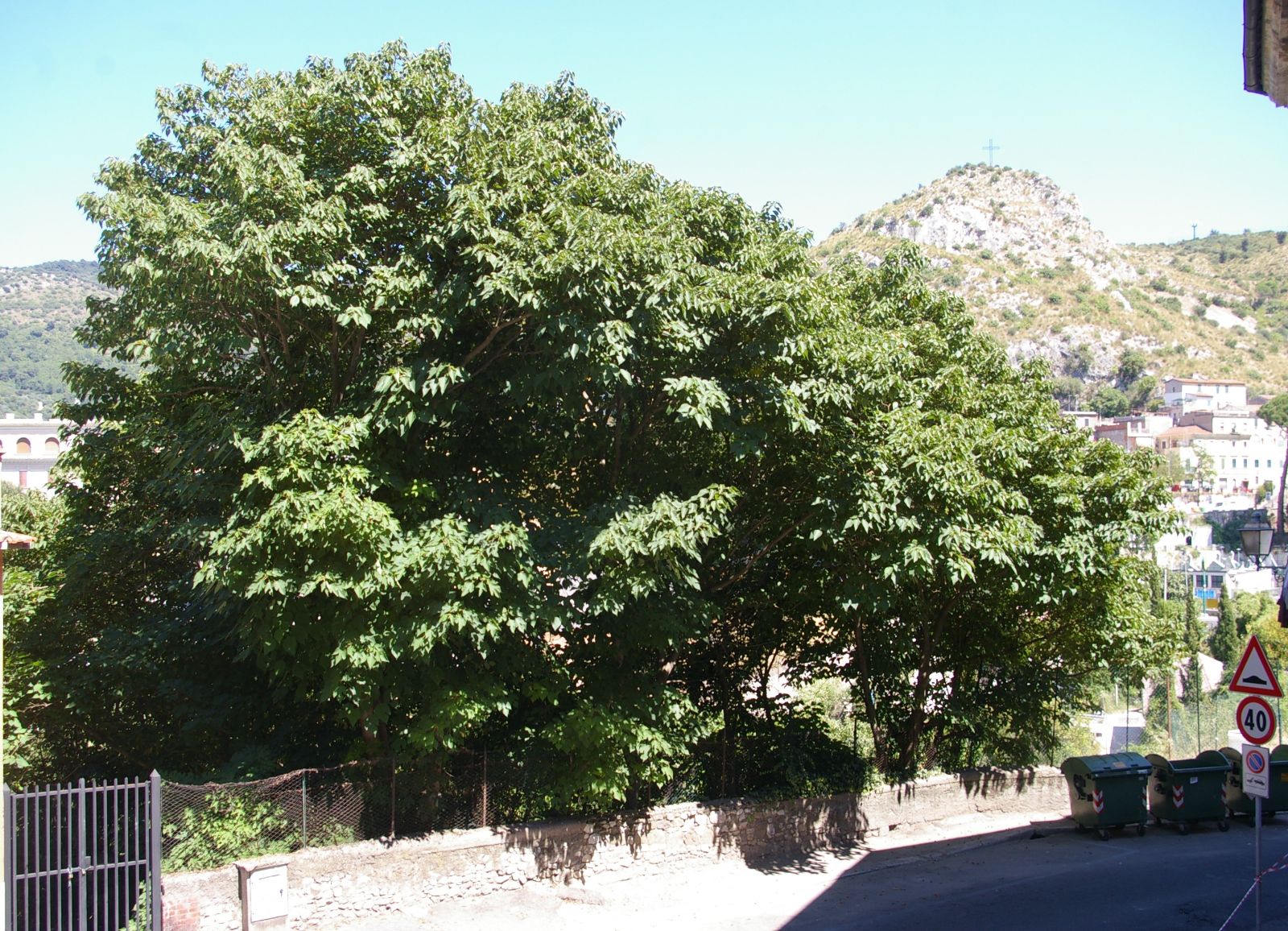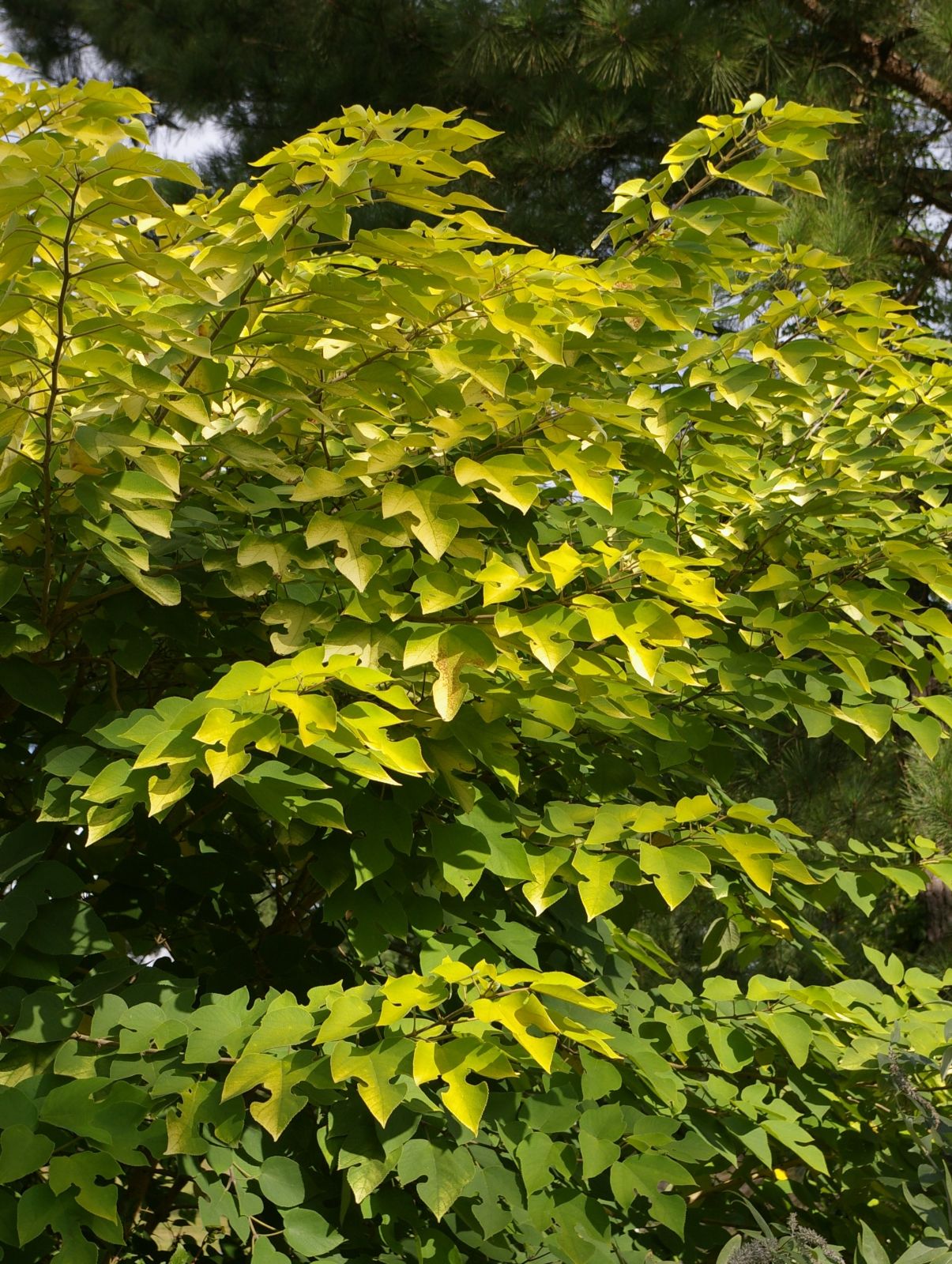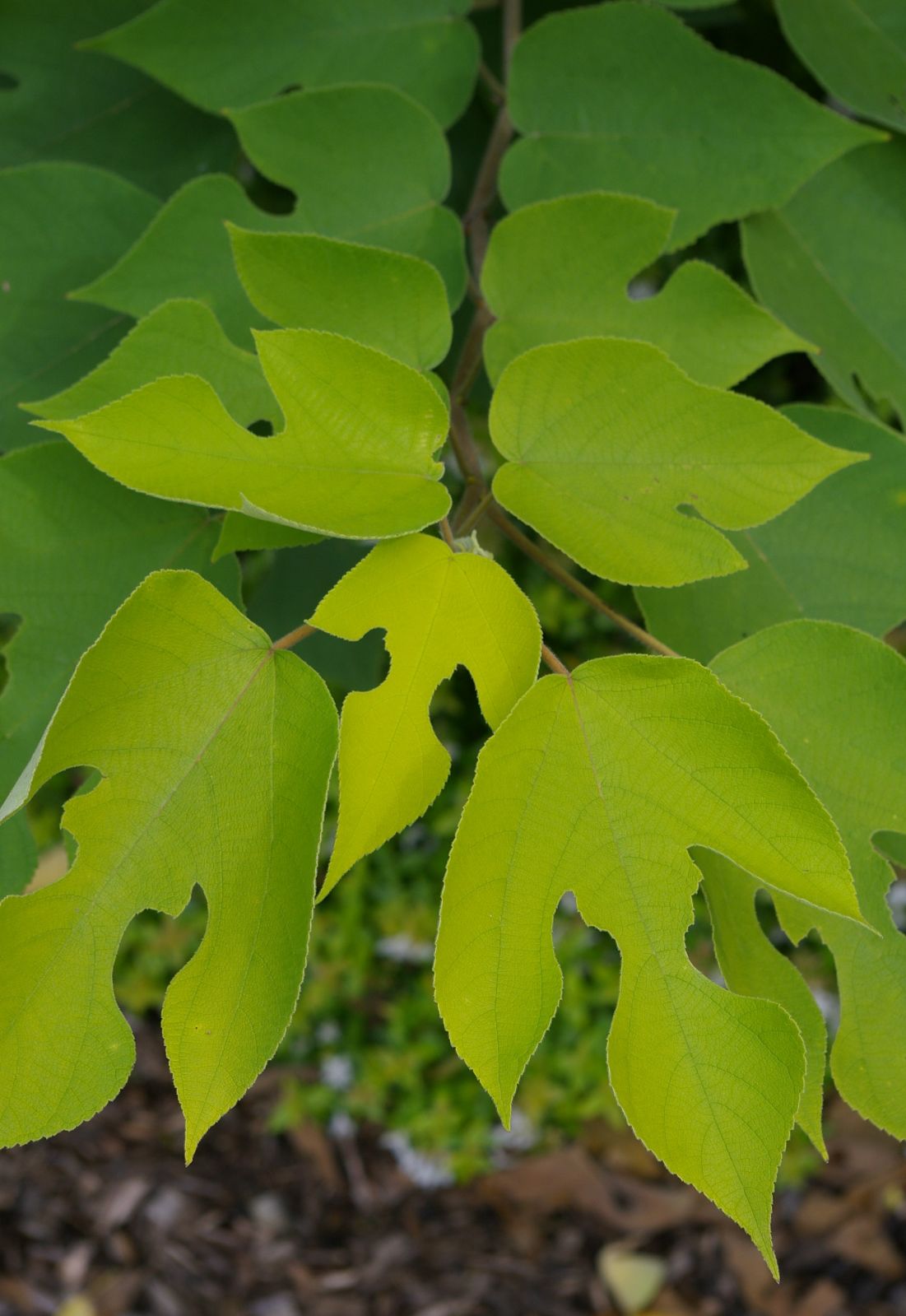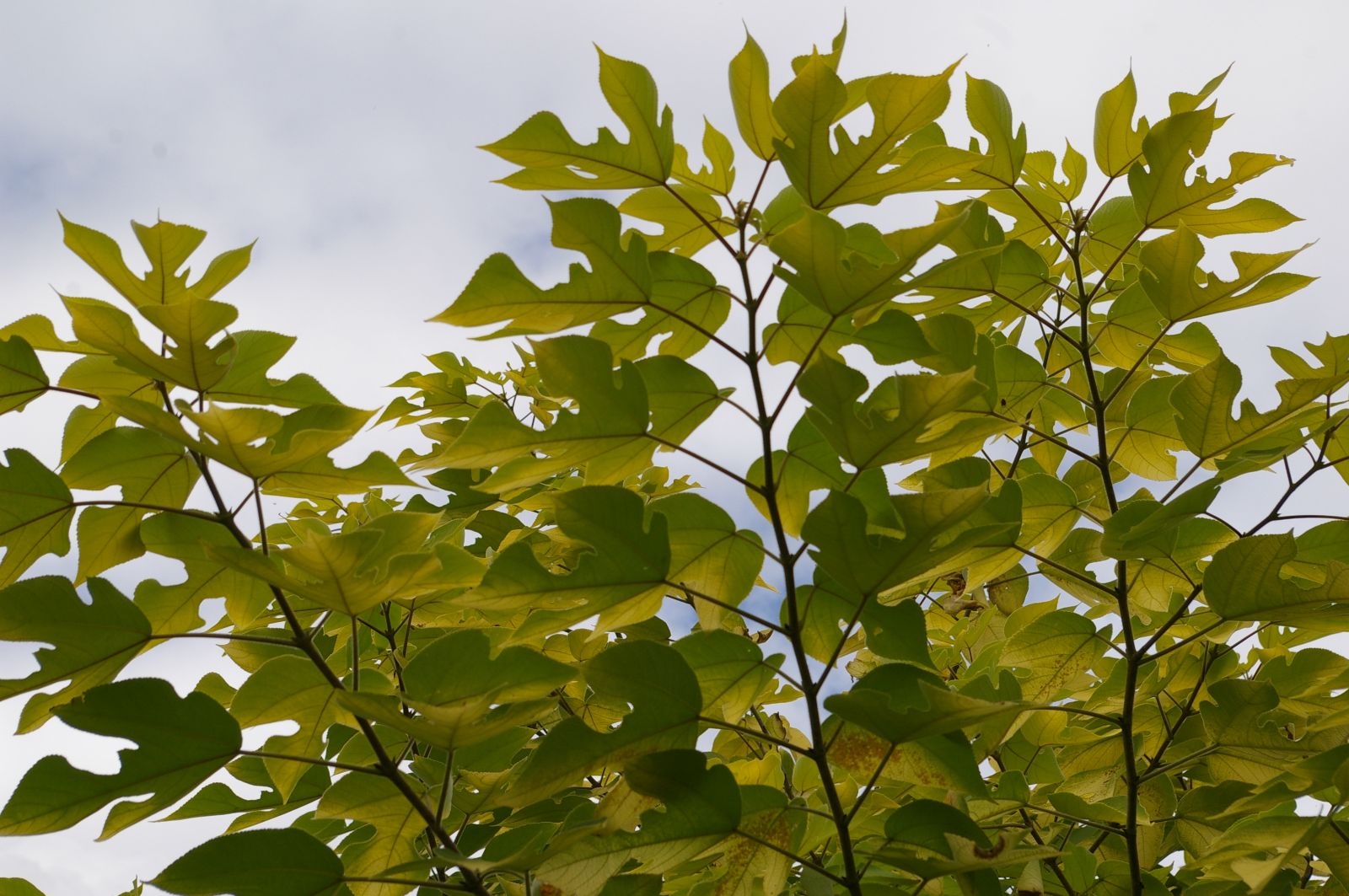Broussonetia papyrifera
Sponsor
Kindly sponsored by a member of the International Dendrology Society.
Credits
Tom Christian (2022)
Recommended citation
Christian, T. (2022), 'Broussonetia papyrifera' from the website Trees and Shrubs Online (treesandshrubsonline.
Infraspecifics
Other taxa in genus
Tree 10–20 m tall, dioecious. Bark gray, smooth, often developing lattice striations with age. Branchlets densely pubescent. Leaves spirally arranged, 6–18 × 5–15 cm, broadly ovate to narrowly elliptic-ovate, simple or with 3–5 lobes (deeply lobed leaves common on young trees and vigorous shoots), densely pubescent beneath with coarser hairs along veins, sparsely pubescent and rough above; base cordate, asymmetric; margin coarsely serrate; apex acuminate; secondary veins 6 or 7 on each side of midvein; petiole 2.3–8 cm. Male inflorescences long spicate, 3–8 cm, bracts lanceolate, pubescent. Female inflorescences globose, bracts clavate, apically pubescent. Male flowers: calyx 4-lobed, lobes triangular-ovate and pubescent; anthers globose. Female flowers: calyx cylinridcal, lobes apically connate with style; ovary ovoid; stigma linear, pubescent. Fruit syncarpic, orange-red at maturity, 1.5–3 cm across, pubescent with scattered stout and barbed hairs, fleshy. (Cullen et al. 2011; Wu, Zhou & Gilbert 2003).
Distribution Bhutan Myanmar Cambodia China India Japan North Korea South Korea Laos Thailand Vietnam Taiwan
USDA Hardiness Zone 6-10
RHS Hardiness Rating H3
The Paper Mulberry was among the vanguard of Asian plants introduced to Europe – it has been cultivated here since at least the early 18th century. Peter Collinson was growing it in London by 1751 and Linnaeus included it in his Species Plantarum two years later under the name Morus papyrifera L. The Mulberries are Broussonetia’s closest relative, differing most obviously in details of the female flowers and the fruit (see genus article for details). The name Paper Mulberry references one of this species’s myriad uses in its native range and across the Indian and Pacific Ocean island groups. Indeed, this article could easily be extended to several thousand words focussing solely on Paper Mulberry’s ethnobotanical prowess: for millennia its abundantly pithy shoots have been an important souce of fibre for the manufacture of paper, textiles, and barkcloth. These are the uses with which it remains best associated, but it has also been used as a source of food, medicines, and timber. It was regularly encountered during the voyages of James Cook, for example, whose naturalists noted that in Tahiti ‘the finest and whitest cloth worn by the principal inhabitants was made from this material’ (Bean 1976). The earliest known paper money, dating from Tang Dynasty China (7th–10th centuries) was made in part with fibres from Paper Mulberry (Cartwright, Duffy & Wang 2014). The species is well represented in Kew’s economic botany collection by items including ‘fans, envelopes, a bowl, kite, parasol, coat, cloak, hat, dresses and shoes’ (Plants of the World Online 2021). Mabberley (2017) records that ‘mulberry paper’ is currently used in the USA to create ‘ecologically sensitive funerary urns!’
As early settlers migrated from south east Asia into and then between the Pacific island groups, Paper Mulberry travelled with them. Its continued presence in many island nations depended on cultivation; despite being an often aggressive pioneer species, able to colonise abandoned farmland, disturbed ground, and withstand high levels of pollution, localised extinctions are well documented, some no doubt a result of only a single sex being cultivated, as vegetative propagation has long been the favoured method (Chung et al. 2017). Other regions have not been so lucky: Paper Mulberry has become an invasive weed in several parts of the world, including in forests in Uganda, the South American Pampas, and in parts of the United States, southern Europe, and western Asia (Plants of the World Online 2021). Michael Dirr calls it ‘An aggressive, intimidating, invasive species that colonises waste areas and never lets go. In Athens [Georgia] it is the biological glue that keeps the railroad embankment from eroding’ (Dirr 2011). Where Paper Mulberry naturalises or invades populous areas it can present a public health problem due to the allergenic pollen; Malik & Husain (2007) suggest that in Islamabad, Pakistan, thousands of hospital admissions each spring are attributable to Paper Mulberry which has become a noxious weed in and around the city following its extensive deployment as a street tree in the 1960s and 70s; efforts are underway to gradually replace these with more benign subjects (Coles 2019).
This sad reversal of fortune is not particularly counterbalanced by its performance in gardens. Horticulturists have never lavished Paper Mulberry with unguarded praise, but Bean (1976) admired it in various towns along the Dalmatian coast where it was regularly grown as a street tree, and it does seem to do more to commend itself in a continental climate (pers. obs.). Most authors agree that at its best it is a handsome small tree, with attractive, variably-shaped felted leaves and curious flowers and fruit, but early accounts marked it down for its underwhelming aesthetic while contemporary writers, taking a global view, often get caught up by its pitfalls. It is curious, then, that by the 2020s several large commercial nurseries in Europe are promoting and offering this tree, often as semi-mature standards, presumably aimed at a market that all too often demands interesting trees grow in appalling situations. Presumably these offerings are all female clones, otherwise the problems of allergenic pollen experienced in Islamabad and elsewhere will become a European problem, too, and its tendency to invasiveness in certain parts of the world should always be kept in mind when it is being considered. A final word from Dirr: ‘Certainly not a tree for the average garden but perhaps for impossible sites’ (Dirr 2011).
'Billiardii'
Very like ‘Laciniata’, but a more vigorous, larger-growing, upright small tree. Raised by M. Billiard of Fontenay-aux-Roses, France, in the mid 19th century (Bean 1976).
'Cucullata'
A male clone with leaves upcurled at the edges, giving the blades a boat-like appearance. Its origins are unknown (Bean 1976).
'Golden Shadow'
Synonyms / alternative names
Broussonetia papyrifera 'Aurea'
A North American selection raised prior to 1998 and later introduced by Don Shadow of Tennessee. The leaves emerge a rich yellow to golden-yellow colour; as the shoots continue to develop through the summer the plant retains a golden appearance throughout the growing season (John Grimshaw pers. obs, Dirr 2011) though Hatch (2021–2022) is right to say that leaves turn greenish with age or on shaded branches. Hatch (2021–2022) considers the recent (2017) introduction ‘Jungeng’ to be identical.
'Laciniata'
W.J. Bean referred to the two cultivars ‘Cucullata’ and ‘Laciniata’ as ‘curious freaks’, and his description bears this out: ‘In this remarkable variety, which is quite dwarf, the leaf is reduced to the stalk and the three main veins, the ends of which have each a small, narrow, variously shaped blade. The leaf has thus a trifoliolate aspect. When in foliage the whole shrub is a tangle of these slender leaf-stalks’ (Bean 1976).
Variegated Cultivars
Only a few variegated selections of Paper Mulberry have been named. None are widespread in horticulture and their long-term worth is yet to be proven:
- ‘Kuanyin’ A Taiwanese selection with leaves variously speckled, mottled, or striped cream-yellow to white
- ‘McCartney Variegated’ (‘Variegata’ misapplied) Leaves mottled pale green; unstable; found by B. McCartney in South Carolina, USA
- ‘Variegata’ Leaves mottled white; origin unknown


